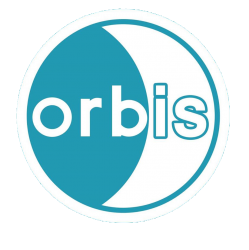General information
Orbis is committed to improve its accessibility both on social media and its events. Below you can find information in English on the accessibility practices that Orbis aims to follow.
The guide is also available as a downloadable PDF-file.
Alt Text
Alt Text (alternative text) is a written version of an image accessible to screen readers. When adding Alt Text to images, think about what is most important in the image: keep it short but descriptive! Break each item with a comma.
If the image contains text, include the message in alt-text. Do not repeat the caption.
Color contrast
Paying attention to color contrast is important because it affects the visibility of the content. You can use free accessibility checkers to check the color contrast of your content (for example Webaim and Wave)
Links
Make sure to describe where each link will lead.
Instructions for different platforms
Add captions and alt text to images. Although Facebook offers machine-generated alt text, edit it to add more context. Click the three dots at the corner of an image and then “Change alt text”.
Avoid using acronyms.
Check color contrast on images; place text over a solid, high-contrast background.
Use descriptive link text.
Capitalize each word in hashtags.
When sharing events onto the page, include in the description alt-text for the previewed event image.
In-person events
Event descriptions must include information on accessibility, the principles of safe space, along with any other relevant safety information.
At the moment, the New Student House is inaccessible for wheelchair users. When hosting an event at the New Student House, In the event description give contact information in case someone is unable to access the building, and have an alternative location that can include attendees in wheelchairs.
Offer to meet any people who need assistance in accessing the location.
Add hashtags in the comments or at the end of the caption. Capitalize each separate word in hashtags. For example: #UniversityOfHelsinki
Use alt text. When creating a new post, on the last page before posting, tap “Advanced settings” at the bottom of the page. Then choose “Write Alt Text”. You can also add alt text to existing images: tap the three dots next to your image, choose “Edit”, and then “Edit Alt Text”.
For Alt. text, remember it is not visible, unless using a screen reader. Use commas to break long sentences in smaller pieces, for more fluidity for screen readers users.
In Instagram stories or other videos, provide captions whenever someone is speaking.
When posting stories, remember that they are not accessible to people who need screen readers, so if there is key information, make a post about it.
Add alt text to images using a guide by the University Information Technology Services, Indiana University.
Adding alt text is only possible on desktop; use “add description” at the top of the uploaded image.
Add closed captions to videos.
Use descriptive link text.
Mailchimp
Use descriptive subject lines.
Don’t hide info in pictures. Make sure most critical content in the message is in text.
Use alt text for images following this Mailchimp guide.
Use descriptive link text.
Add the most important information to the top of your message. Maintain a logical structure in your message. Use headers.
Use color contrast.
Use the following three links to guide your email writing.
Mail Chimp accessibility guide
TikTok
Check current available features on Tiktoks webpage.
Use text-to-speech in video editing.
Add captions in video editing; text is automatically transcribed but can be edited before displayed on the video.
Websites
Use easily understandable language and sentence structure.
Choose accessible templates. Pay attention to the contrast, keyboard navigation, and screen-reader navigation.
Add Alt Text to all images and buttons.
Check color contrast.
Check heading structures on the website. Implement different headings in the appropriate places, starting with H2 in the main text.
Use descriptive link text.
Provide alt-text when sending images.
Make sure any PDFs and other files sent are accessible.
Zoom or other video conferencing platforms
Use otter.ai for auto-captioning.
Screen-reading is not possible for screen sharing! Make PowerPoints available outside of Zoom before or after the meeting.
When using visuals, describe them for those who are unable to see them.
Send a transcript before and/or after the meeting.
Event descriptions must include information on accessibility, the principles of safe space, along with any other relevant safety information.
If you have something you would like us to add to our accessibility guide or if you see an area where we are not implementing the actions outlined in the guide, please email us at orbis@helsinki.fi.
(Updated in October, 2021)

